Prostate disease is one of the most common and insidious diseases affecting men over 40.At first, patients may not even realize there is a problem, but over time the symptoms become felt.If you do not consult a doctor in time, prostatitis becomes chronic and complications may occur.Depending on the severity, cause and nature of the course, different types of prostatitis are distinguished.
Types of prostatitis according to the form of occurrence:
- spicy;
- chronic;
- latent.
What type of prostatitis occurs due to:
- herpetic;
- bacterial;
- calculous;
- stagnant;
- infectious;
- purulent;
- chlamydial;
- fungal;
- gonorrhoeal;
- fibrous.
Classification
Faced with such an unpleasant disease of the genitourinary system as inflammation of the prostate gland, many men wonder why prostatitis appeared in them.
Understanding the etiology of the disease helps to make an accurate diagnosis and promotes effective prevention.
According to the shape of the stream
According to the course, prostatitis is divided into acute, chronic and latent, distinguishing between catarrhal, follicular and parenchymal (purulent).
The following forms of the disease are distinguished:
- With catarrhal prostatitis, the male body experiences urination disorders and discomfort in the pubic area.This is the most common type of acute prostatitis.
- Follicular prostatitis is characterized by symptoms such as pain in the groin or anus, high body temperature and severe problems urinating (dysuria).In a more advanced form, when the patient postpones the visit to the doctor, acute pain occurs during urination and urinary retention occurs.
- Parenchymal prostatitis - an abscess with purulent content is formed in the body of the prostate gland.In this case, the temperature rises, sharp pain appears with frequent urges to urinate.The temperature rises to 39-40 ° C, the act of defecation becomes almost impossible.
Acute prostatitis
Acute prostatitis is a condition in which there is inflammation of the prostate gland, occurring for a short time and characterized by various symptoms.Swelling of the gland occurs, provoked by the negative effects of the pathogenic microflora.Pathogenic bacteria disrupt the integrity of tissues, causing constant discomfort in the pelvic area even at rest.
There are several preferred ways for an infection to enter the prostate gland:
- in inflammation of the rectum - lymphogenic pathway;
- after infectious diseases - hematogenous;
- directly through the urethra - canalicular.
Excessive accumulation of contents in the prostate gland creates excellent conditions for the reproduction of bacteria, which causes various complications:
- abscess;
- prostate adenoma;
- prostate cancer;
- loss of potency;
- infertility.
The symptoms of prostatitis are so painful that the patient is forced to urgently consult a doctor for help.If this is not done in time, prostatitis will become chronic, which is much more difficult to treat.Antibacterial therapy in combination with drugs that strengthen the immune system effectively fights the disease.
Chronic prostatitis
Symptoms of chronic prostatitis are usually detected against the background of congestion in the prostate gland, as a result of untreated acute disease.It usually occurs in men over 50 who have not sought help and treated themselves.Many of them suffered complications due to accompanying diseases.In addition, at this age, not everyone is sexually active enough, as a result of which the secretion thickens and stagnates in the prostate, which leads to dysfunction.Interrupted intercourse also provokes fluid stagnation.According to modern research, about 40% of men experiencing symptoms of chronic prostatitis experience problems with erection.
Chronic prostatitis, as a rule, has mild symptoms that appear only during an exacerbation.Patients report a dull ache in the groin that worsens after physical exertion and at the end of the day.Often the pain radiates to the lower back, scrotum and perineum.Frequent urination is noted, especially at night, the flow is erratic and the flow is crooked.
The sexual act becomes less prolonged, an incomplete erection is noted, and sometimes pain occurs in the head of the penis.Infertility usually occurs in people with chronic prostatitis;impotence practically does not occur at this stage of the disease.Sometimes there is a change in the color of the genitals;due to improper blood circulation they turn purple.
Each of the symptoms of prostatitis worsens if left untreated.The condition is similar to the manifestations during the acute course of the disease.Weakened immunity, stress, neglect of the diet, bad habits - all this leads to exacerbation and worsening of the condition.
Often, the chronic form leads to the appearance of symptoms of diseases such as cystitis, kidney disease, adenoma.The risk of urolithiasis and malignant tumor formation increases.Often, the pathological process is practically asymptomatic and is discovered completely by chance during laboratory tests related to another disease.
Due to the occurrence
There are many reasons that provoke the development of prostatitis of infectious and non-infectious etiology, as well as predisposing factors.Due to their appearance, the following types of prostatitis are distinguished:
- bacterial;
- calculous;
- stagnant;
- infectious;
- purulent.
A sedentary lifestyle, frequent hypothermia, infrequent sexual activity, interruption of intercourse, smoking, alcohol abuse, stressful situations - all these circumstances affect the stagnation of secretions in the vessels of the prostate gland and in the vessels located next to it.Prostatitis is classified into several forms depending on the causes of its occurrence.
Bacterial prostatitis
Bacterial prostatitis is caused by bacteria that penetrate the prostate gland in various ways.It can be either one type of bacteria or a group of them.The disease can be caused by:
- fungi;
- gonococci;
- Koch rod;
- chlamydia;
- several types of bacteria at once.
The inflammatory process is most often associated with the penetration of bacteria caused by sexually transmitted diseases into the prostate gland.Chaotic sex with frequent changes of partners and without the use of protection leads to diseases such as gonorrhea, chlamydia and fungal infections.In addition, the development of pathology is facilitated by a decrease in immunity due to disruption of work and rest.Harmful habits such as smoking, drinking alcohol, sedentary lifestyle, etc.also reduce immunity.
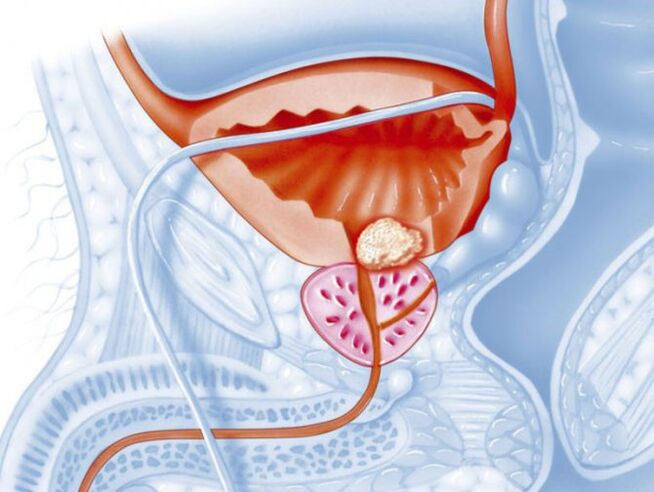
The most obvious symptoms accompanying bacterial prostatitis include burning, pain, and a cloudy discharge during urination.The smell of urine is unpleasant.Common symptoms accompanying intoxication are observed: dizziness, weakness, nausea, fever.There is pain during ejaculation and sometimes there is blood.In chronic bacterial prostatitis, urination becomes more frequent and a yellowish or greenish discharge from the genitals appears.
Calculous prostatitis
In calculous prostatitis, stones form in the ducts of the prostate gland.This form of the disease is very complex and is accompanied by severe pain.The conglomerates are of different origin: phosphates, oxalates, with a predominance of calcium and proteins.
There are two reasons for the formation of stones in the ducts: stagnation of the contents of the gland and reflux of urine into the prostate.
Stagnation is associated with various factors that interfere with the normal outflow of the secreted fluid.Long-term sexual abstinence, hyperplasia, the presence of a tumor closing the channels, a sedentary lifestyle leads to stagnation of secretions and disruption of the vascular and lymphatic systems.
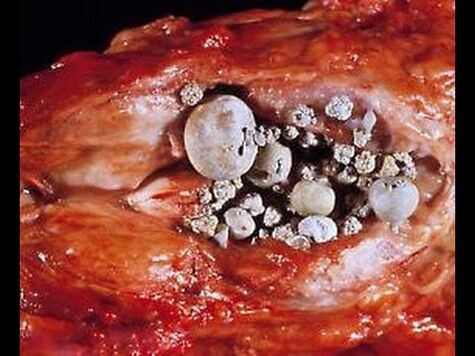
Urinary reflux is provoked by a malfunction of the sphincter, which relaxes and urine flows both outward and inward.The presence of stones and sand in the bladder contributes to the development of stones in the prostate ducts.They are carried there with urine, settle and continue to grow, eventually reducing the output.Sphincter dysfunction can result from injuries to the genitals and surgical interventions.
Initially, the calculous form of prostatitis is asymptomatic;as the stones grow, the symptoms appear and increase.There is pain in the lower abdomen or scrotum, radiating to the buttock and lower back.Pain at rest is not observed and occurs only during physical activity, defecation and urination, as well as during intercourse and when walking.
Large stones with sharp edges injure the channel during their movement, which leads not only to pain, but also to the release of blood in the urine and ejaculate.Stone wounds can easily become infected, and then calculous prostatitis will become infectious.
After about a month, with calculous prostatitis, the functioning of the entire organism is disturbed, a person feels bad, experiences insomnia, increased fatigue and irritability.
In the advanced stage of the calculous form of prostatitis, after a comprehensive diagnostic examination, medications are prescribed and surgical treatment is performed to remove conglomerates.
Congestive prostatitis
Stagnant type of prostatitis occurs due to retention of secretion in the prostate gland.Most often, such problems are observed in men with a sedentary job who do not play sports.As a result of the lack of physical activity, blood circulation in the pelvic organs is disturbed, the prostate suffers from a lack of oxygen and nutrients, stagnation and inflammation occur.If nothing is done, the disease becomes chronic and causes great discomfort.
Stagnant prostatitis is provoked by an irregular sex life or its complete absence.In this case, men should free the gland from secretion themselves, but do not overdo it, as regular masturbation can harm due to incomplete ejaculation.Many husbands have found a method of preventing pregnancy for themselves, such as ceasing intercourse.This also leads to incomplete ejaculation and the development of inflammation.
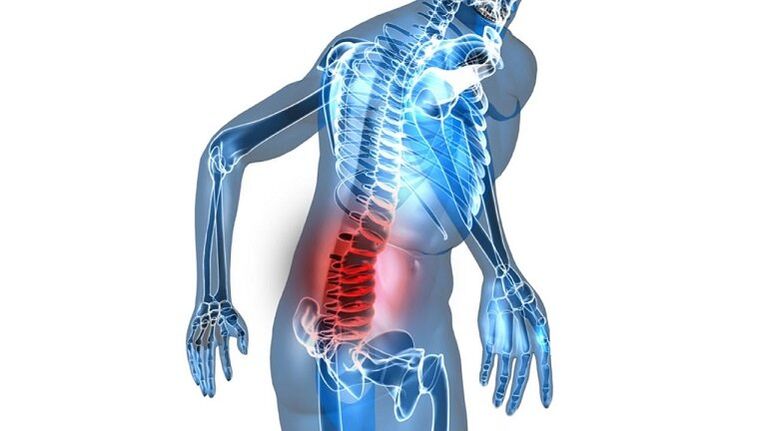
Sometimes the provoking factor is hypothermia or varicose veins.Abnormalities in the structure of the prostate gland can also cause stagnation.Regular overheating of the pelvic area and constant constipation adversely affect the production of secretions.Depending on the factors that provoke the disease, there are several types of stagnant prostatitis.
- Venous prostatitis.It occurs in people suffering from varicose veins of the lower extremities.This disease affects all the organs in the pelvis due to improper blood circulation.
- Stagnant.It develops with partial emptying of the prostate gland.Gradual overflow leads to stagnation.
- Chronic.It develops when an incorrect lifestyle becomes a habit.If nothing is done to change the situation, the disease becomes chronic.It is more common in single men suffering from obesity in adulthood, when the history is complicated by concomitant diseases.At this stage, the prostate often increases in size, which is easy to determine on examination.
- Infectious.It joins an existing inflammation of the prostate when an infection enters the genitourinary system.
Symptoms of prostatitis that occur are caused by difficulty urinating, pain in the groin, straining during bowel movements, and decreased sexual activity.As a result of these symptoms, with stagnant types of prostatitis, poor health, irritability develops, efficiency decreases and sleep is disturbed.
Infectious prostatitis
Microorganisms that can provoke the appearance of signs of acute prostatitis include Escherichia coli, Staphylococcus aureus, Proteus, Eltirococcus, Klebsiella.There are bacteria that are constantly in the body, but in a latent state do not lead to inflammatory processes.Upon penetration through the urethra onto the mucous membrane of the prostate gland, the process of development and reproduction of microorganisms begins, which leads to inflammation.Promiscuous and unprotected sex also allows harmful bacteria to enter the body.
Characteristic symptoms are pain in the scrotum, perineum, lower abdomen, waist, pain and burning in the pelvis.Difficult urination, acute retention of urine occurs.In addition to the listed symptoms that accompany the infectious type of prostatitis, constipation, discharge from the urethra, hemospermia and pain during ejaculation may occur.
This is a dangerous disease that, even in the earliest stages, can provoke an infection of a sexual partner, lead to general blood poisoning or the development of pyelonephritis and cystitis.
Purulent prostatitis
Purulent prostatitis usually develops when a bacterial infection enters the prostate.The disease proceeds in four stages.
- Catarrhal.It develops after an acute respiratory viral infection, sore throat or flu.There is purulent content in the urine.There is a burning sensation when the bladder is empty.Patients note a weakening of potency.The process that accompanies this type of prostatitis involves the superficial tissues of the prostate.
- Focal.The process extends to the glandular tissue.The channels swell, the outflow is disturbed.The gland increases in size due to the accumulation of pus in it, which is excreted in the urine.Body temperature rises.
- Parenchymatous.The connective tissue is involved in the process, the swelling becomes even bigger, and the temperature can reach 40 °C.Explosive pain in the anus does not give rest and a false desire to defecate is felt.
- Abscessing.The most insidious form of prostatitis.The temperature drops sharply, there is abundant pus and unbearable pain.This stage can be complicated by peritonitis and can be fatal.
Purulent prostatitis can be complicated by symptoms and diseases such as paraproctitis, paracystitis, abscess and sepsis.Usually, these pathologies are treated surgically and include the removal of pus bags.
Diagnosis
Diagnosis of the types of prostatitis is not particularly difficult and begins with the collection of anamnesis, which helps to understand more precisely the picture of the disease.Then a rectal examination is performed, during which the size of the gland is determined, the nature of the pain is determined, and the presence of swelling and hardening is detected.
To make an accurate diagnosis, laboratory tests are prescribed:
- urine test;
- urine culture with AB sensitivity test;
- general blood test;
- analysis of prostate secretion;
- biochemical blood test;
- rectal examination.
Additional diagnostics includes instrumental research methods.First of all, an ultrasound is performed;if necessary, MRI and TRUS are additionally prescribed.Relatively recently, a new PET research method has appeared;is considered the most informative.
Treatment of inflammation
Urologists treat all types of prostatitis.Traditional methods are good, but only together with medical prescriptions and with the permission of the attending physician.
First you need to understand the cause that caused the disease, and only then can symptomatic treatment be carried out.
- Active antibacterial therapy helps in the treatment of prostatitis.Parenteral administration of antibiotics is most effective.
- Pain relievers and diuretics are indicated for severe pain.
- Laxatives are prescribed for constipation.
- In case of severe pain and difficulty urinating, novocaine blocks are placed.
- A course of vitamin therapy and immunocorrectors is indicated.
- It is worth sticking to a special diet that excludes spicy, salty and smoked foods.
- Bed rest is prescribed.
Local treatments include sitz baths with water two degrees warmer than body temperature.Enemas are made with a herbal decoction of anti-inflammatory herbs with the addition of 1% anesthetic, and the contents are slowly introduced into the intestines and left there as long as the patient can stand it.
Physiotherapy treatment also has a beneficial effect on the restoration of prostate function.Prostate massage is prohibited in acute prostatitis, but recommended in chronic prostatitis.To restore metabolism, normal blood circulation and relieve swelling, UHF and microwave are prescribed.
If urination is delayed for a long time, a catheter is installed.In some stages of the disease, surgical treatment is indicated to open pus bags and install drainage.
Treatment of acute prostatitis takes from several weeks to a month.A favorable outcome is usually observed.If the disease has complicated or reached a chronic stage, the process will be complicated, long and may take several months.
Limitation of sexual activity and use of personal protective equipment is indicated during treatment.
Medical physiotherapy apparatus helps to treat prostatitis.It effectively removes the symptoms of prostatitis, is able to restore reduced sexual activity, removes pain, relieves swelling and inflammation.The device can be used at home for both treatment and prevention of diseases of the pelvic organs.
The device will relieve muscle tension, improve sperm production, strengthen blood vessels and prevent the development of other possible diseases in the pelvis.The device, which is used to treat prostatitis in men, is easy to use, equipped with a regulator for heating and vibration mode and works from the mains.Compact dimensions allow the device to be used in any conditions.
How to prevent the development of the disease?
Prevention of various types of prostatitis, like any other disease, is to maintain a healthy lifestyle, avoid bad habits and have a balanced diet.If you are diagnosed with prostatitis, you should not neglect exercise.If any outbreak of inflammation occurs, you should immediately consult a doctor to eliminate the cause and prevent the spread of infection to other organs.
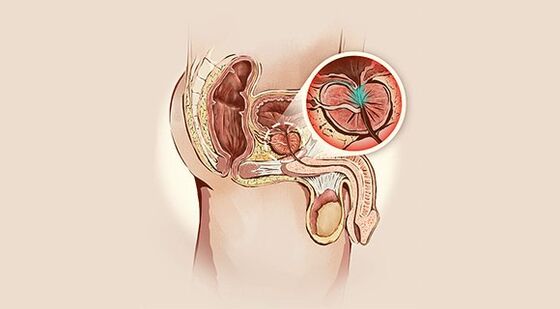
You must lead a decent lifestyle and regularly have sex with a regular partner.It is important not to forget the personal hygiene of the genitals and not to neglect regular preventive examinations by a urologist.If a person knows what prostatitis can be and at the same time leads a passive lifestyle, he should do exercises that prevent congestion in the pelvis.
Let's summarize
Depending on the causes and characteristics of the course, acute and chronic types of prostatitis are diagnosed.A separate group includes chronic pelvic pain syndrome.Acute prostatitis is characterized by clinical manifestations such as chills, fever and pain.The chronic form may not manifest itself in any way or have a vague picture: impaired urination, pain in the pelvic area, which, if complications develop, can lead to impotence and loss of fertility.
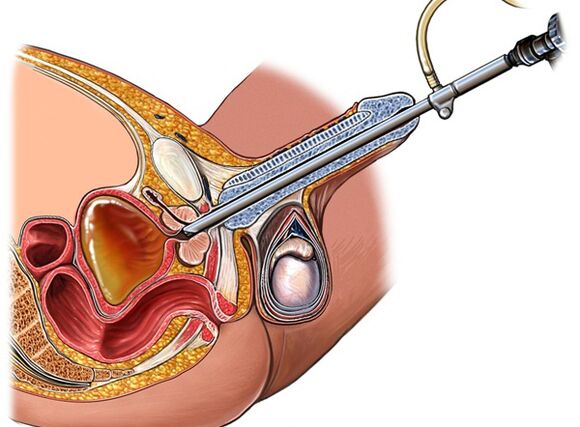
Acute prostatitis develops suddenly and is easily diagnosed.In contrast, chronic prostatitis occurs in waves, alternating periods of remission and exacerbation.In chronic cases, the identification of pathogenic microbes can cause certain difficulties.The foci of infection that appear in the genitourinary system provoke complications in the form of diseases of the organs anatomically adjacent to the prostate gland.Depending on the diagnosed prostatitis, the urologist prescribes a differentiated treatment regimen.























